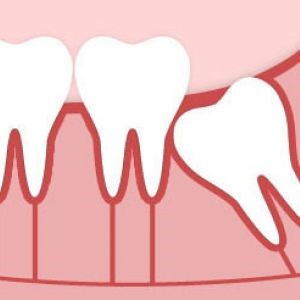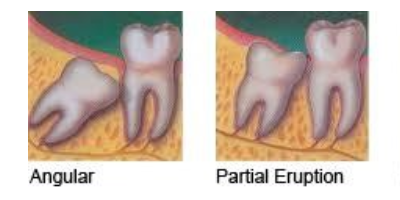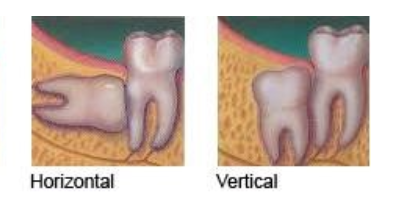.png)


Impacted teeth are the upper and lower third molars located at the very back of the mouth. They are called Impacted teeth as they appear at the age when a person is between 17-21 years old and have gained some wisdom. Impacted teeth that are healthy and properly positioned do not cause any problems. Many times, Impacted teeth can also come in crooked or facing the wrong direction. Or, if your jaw is not large enough to give them room, they may become impacted and unable to break through gums.
Parial eruption of Impacted tooth can create a flap of gum tissue on the tooth. The flap can trap small food particles and debris, which in turn gives home for bacteria to develop. It’s called ‘pericoronitis’, where the tissue around the tooth becomes inflamed and it’s painful. The patient also finds difficulty in opening the mouth. Sometimes, there is discharge of pus from the gums near the tooth and swelling on the affected side of the face. If pericoronitis is servere, the swelling and infection may extend beyond the jaw to the cheeks and neck.


